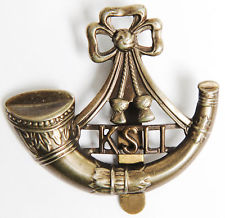Personal Details
Born: In 1902 in Manchester, Lancashire.
Family: He was the nephew of William and Annie Crewe. Further information about his family has not been located.
Residence: In 1911 he lived with his aunt & uncle’s family at 48 Oddfellows Cottages, Smallbrook Road, Whitchurch, Shropshire; the 1919 Absent Voters’ Register shows him at the same address.
Employment: Not known
Died: Not known
Military Details
Regiment: King’s Shropshire Light Infantry (previously Leicester Regiment)
Rank: Private
Service Number: 48695 (previously 47491)
Date of Enlistment: Not known
Date of Discharge: Not known
Reason for Discharge: Not known
Other Information:
Robert appears to have been too young to have served in WW1. We suspect he may have mis-stated his age, although no records survive to confirm this.
Robert was awarded the Campaign Medals (British War Medal, and Victory Medal)

The British War Medal (also known as 'Squeak') was a silver or bronze medal awarded to officers and men of the British and Imperial Forces who either entered a theatre of war or entered service overseas between 5th August 1914 and 11th November 1918 inclusive. This was later extended to services in Russia, Siberia and some other areas in 1919 and 1920. Approximately 6.5 million British War Medals were issued. Approximately 6.4 million of these were the silver versions of this medal. Around 110,000 of a bronze version were issued mainly to Chinese, Maltese and Indian Labour Corps. The front (obv or obverse) of the medal depicts the head of George V. The recipient's service number, rank, name and unit was impressed on the rim.
The Allied Victory Medal (also known as 'Wilfred') was issued by each of the allies. It was decided that each of the allies should each issue their own bronze victory medal with a similar design, similar equivalent wording and identical ribbon. The British medal was designed by W. McMillan. The front depicts a winged classical figure representing victory. Approximately 5.7 million victory medals were issued. Interestingly, eligibility for this medal was more restrictive and not everyone who received the British War Medal ('Squeak') also received the Victory Medal ('Wilfred'). However, in general, all recipients of 'Wilfred' also received 'Squeak' and all recipients of The 1914 Star or The 1914/1915 Star (also known as 'Pip') also received both 'Squeak' and 'Wilfred'. The recipient's service number, rank, name and unit was impressed on the rim.

